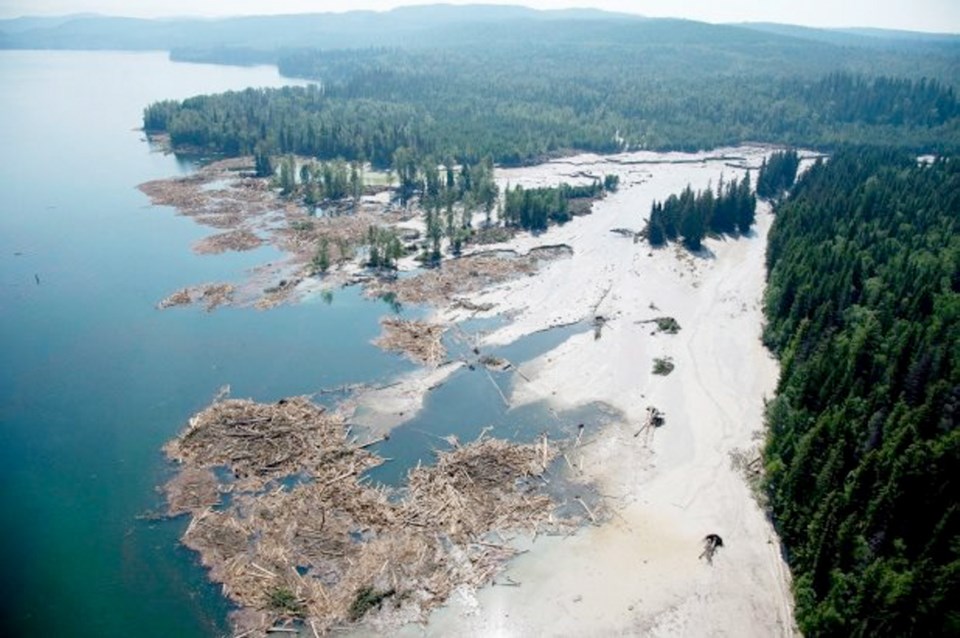 Part of the report by the chief inspector of mines on the Mount Polley tailings-dam failure was devoted to “root cause analysis,” an investigative process developed to look at all the factors that go into engineering failures. The report cites the Challenger space-shuttle catastrophe and the Three Mile Island nuclear-plant crisis as examples of multiple points of weaknesses in systems, and failures all down the line to understand them.
Part of the report by the chief inspector of mines on the Mount Polley tailings-dam failure was devoted to “root cause analysis,” an investigative process developed to look at all the factors that go into engineering failures. The report cites the Challenger space-shuttle catastrophe and the Three Mile Island nuclear-plant crisis as examples of multiple points of weaknesses in systems, and failures all down the line to understand them.
“Another common trait in structural or system failures over time is the cascading nature of the failure itself,” said the report. “Rarely is there a single physical failure in isolation. One event or condition will trigger or enable another.”
The root-cause analysis always leads to organizational factors, meaning human errors. So although a hidden unstable layer under the dam started the August 2014 Mount Polley cascade, there was a litany of contributing failures in designing and operating the tailing pond. The report lays them all out in some detail. Which makes the final conclusion jarring — that no charges will be laid.
It’s similar to the findings in the two separate fatal Prince George-area mill explosions three years ago. They prompted intensive investigations that determined several allegations on the part of WorkSafe B.C. that regulations were contravened. But no charges were laid.
The difference between the mill explosions and the dam failure is that charges were recommended against the mills, but rejected by the Criminal Justice Branch because of numerous deficiencies in the investigations. The dam investigation didn’t even get to the point of submitting a report to Crown counsel.
Al Hoffman, chief inspector of mines, concluded there wasn’t sufficient information to indicate a contravention of existing regulations. Some of the maintenance work and design issues contributed to the failure, but were in general conformance with the design. And there were no specific regulations covering some of the other engineering flaws.
Reading the report leaves the impression that the government’s safety regime is just as open to question as the mine’s management. Hoffman has almost as many recommendations for government as he does for the mining company.
NDP mining critic Norm Macdonald has his own view of root causes, and he said one of them is the B.C. Liberal government’s shift from direct government oversight to “professional reliance” on independent advisers.
He said that weakens accountability. A proper regime of rules and enforcement is in industry’s best interests, he said. “If we’re going to have accountability there has to be some penalty for failure.”
The report on the disaster is blunt on the failures, and why they occurred.
“Although production priorities are inherent in any enterprise, the chief inspector observed an over-arching focus on production to the detriment of other issues. … Even the prioritization of health and safety issues at the mine was subordinate.”
After detailing the technical reasons for the failure, he got into the organizational factors. The slope of the dam was wrong, the company and the engineers involved did not recognize or manage geotechnical or water risks properly. Studies of the foundation were inadequate, and multiple chances to look into it were ignored. The interior of the embankment wasn’t designed properly and too much water was allowed to collect.
The company was responsible to maintain a safe structure but “did not meet this responsibility,” said Hoffman. And delegating responsibility to an engineer doesn’t release the owner from that responsibility.
The inspector also criticized professional reliance. But at the end of the day — no charges.
In declining to lay charges against one of the mills, the Criminal Justice Branch said it’s not enough to say a person or corporation committed a wrongful act or failed to prevent something dangerous from happening. There has to be a substantial likelihood of conviction.
Its conclusion seems applicable to Mount Polley as well: “The fact that something may have been preventable does not, by itself, provide the basis for a prosecution.”
Next up — probably months from now — is the Conservation Service’s report on the disaster. Like the inspector of mines report, it’s independent and will review whether the failure breached two federal fisheries laws or the provincial environmental management act.
It’s a different context and a different lens, so it’s hard to say whether it will reach the same conclusion on charges.



